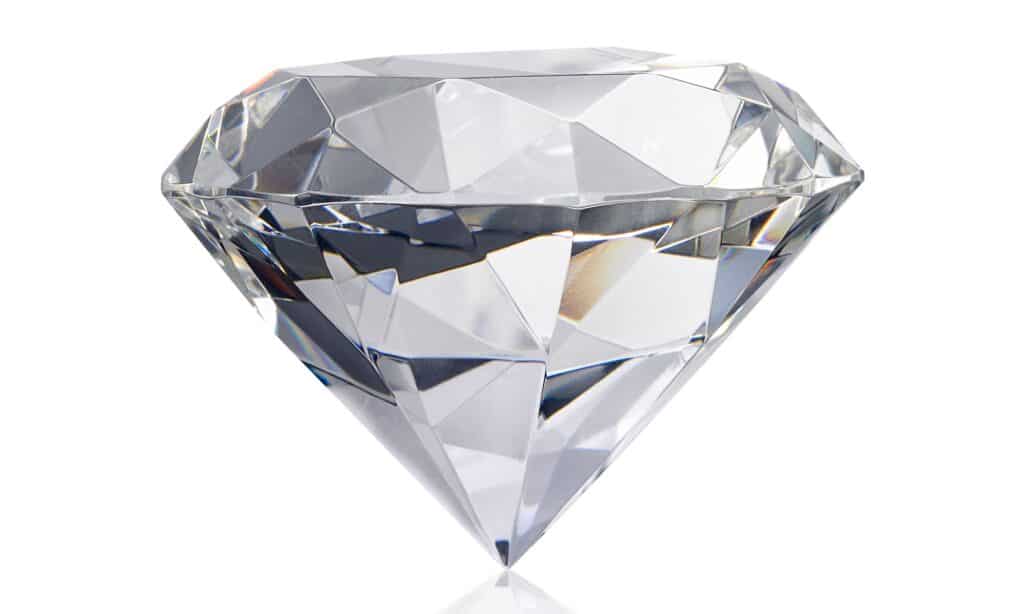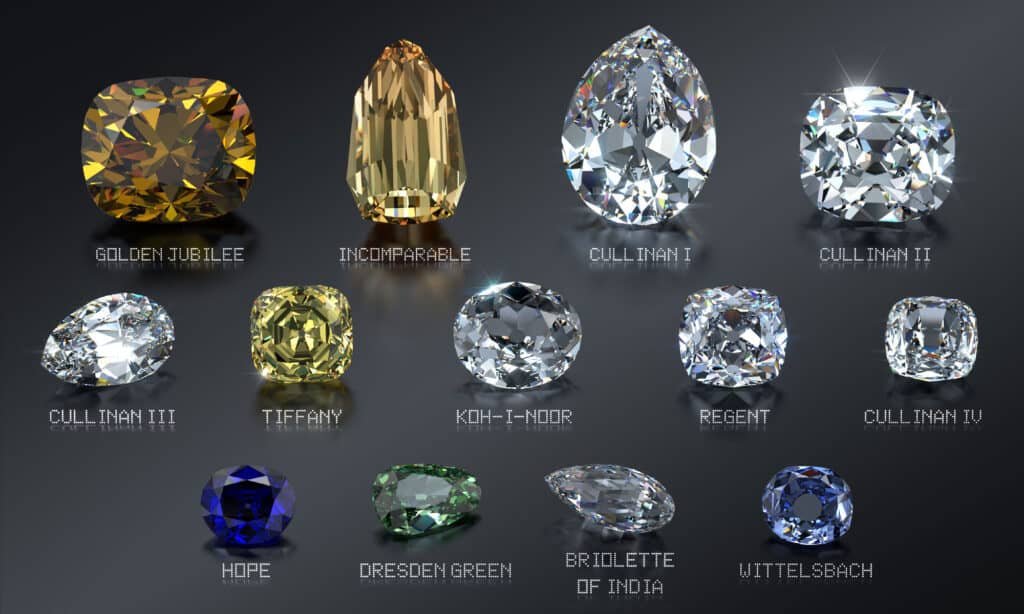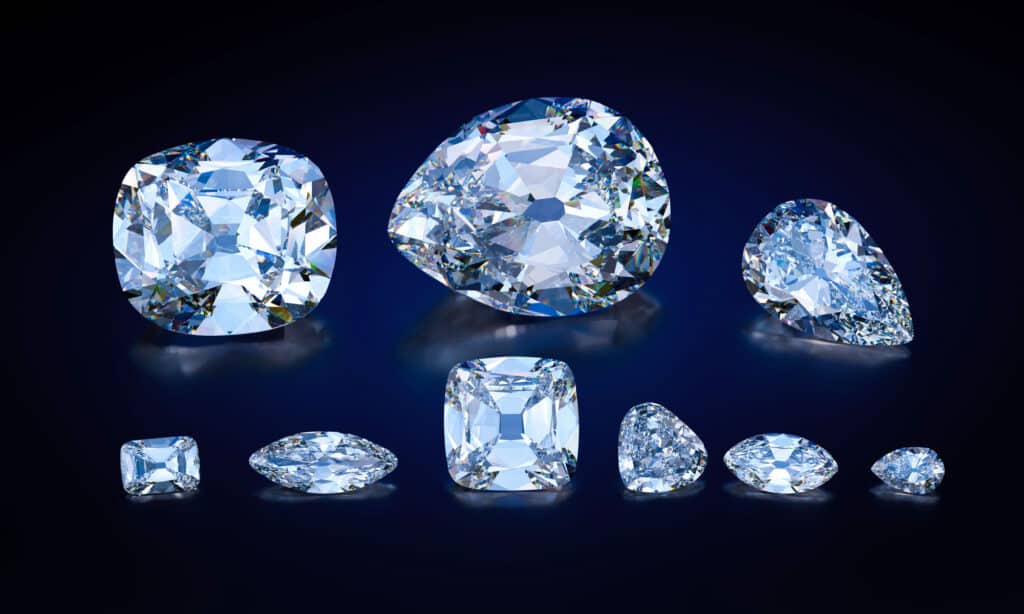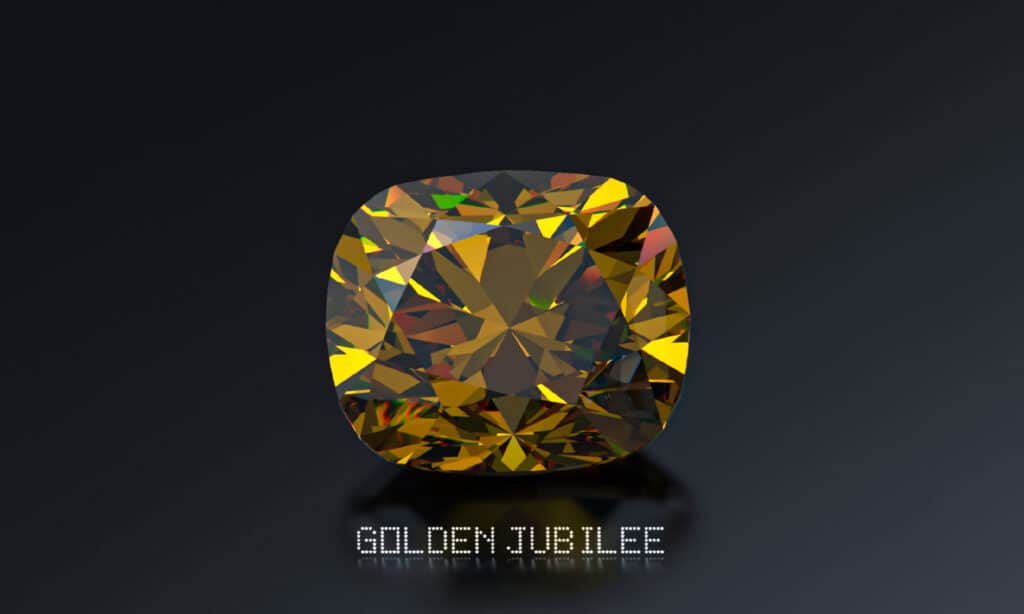Diamonds are all around us in our modern culture. They’re the subject of songs and commercials, and they’re frequently maligned as an unethically sourced object. Diamonds are beautiful and beloved gemstones that have decorated everything from royal scepters to grills. Today, we’re taking a look at the biggest diamond in the world to show you where it’s from, where it’s at, and if it still remains the largest!
What is a Diamond?

Diamonds are composed of carbon atoms.
©Retouch man/Shutterstock.com
Diamonds are minerals composed of carbon atoms aligned in a crystal structure that has been formed under extreme pressure. Diamonds can form naturally or artificially. They also have many uses. For example, they are often used as gemstones for their beautiful looks, clarity, and more.
Due to intense marketing, diamonds have become very important for weddings in North America and parts of Europe. In fact, diamonds have nearly become a requirement as the gemstone in engagement rings and wedding bands in the modern-day.
Diamond is also the hardest naturally occurring substance. As a result, diamonds are popularly used in industrial applications such as tips on saw blades and more.
Unfortunately, the sourcing of these diamonds is questionable. Between artificial scarcity, horrible mining conditions, and the negative impacts of diamond mining that persist through this day, not everyone feels the same about these stones. Nevertheless, diamonds remain widely known and highly desired.
What is the Biggest Diamond in the World?

The Cullinan Diamond is known for being the largest diamond ever mined.
©DiamondGalaxy/Shutterstock.com
The largest diamond in the world is the Cullinan Diamond, and it weighed 3,106.75 carats (1.33lbs) when it was pulled from the earth. The Cullinan Diamond is known for being the largest diamond ever mined that had gemstone quality. The gem measured 10.1 x 6.35 x 5.9 cm. As one might imagine, the history of this diamond is intriguing.
Frederick Wells, a superintendent at the Premier Mine in Pretoria, South Africa, saw the diamond in the wall of a mine as he was performing an inspection in 1905. The massive diamond was named for and given to the mine’s owner, Sir Thomas Cullinan. The stone was put up for sale but didn’t have any good offers as of 1907.
Eventually, the diamond was bought by the Transvaal Colony government and gifted to King Edward VII of the United Kingdom. However, the stone was too large to be kept in its original state. The king sent the diamond to be cut by Joseph Asscher & Co. in Amsterdam, and it produced nine substantial stones.
These stones were named Cullinan I- Cullinan IX, and they have been included in the royal collection since. Most notably, the largest diamond cut from the original Cullinan collection is the Cullinan I, also known as the Great Star of Africa. This diamond weighs 530.2 carats and has 74 facets.
The Great Star of Africa is set in the Sovereign’s Sceptre with Cross, a staff that is used during the coronation of the monarch of the United Kingdom. The scepter is also adorned with 333 diamonds, 31 rubies, 15 emeralds, 7 sapphires, and more.
Where is the Diamond Today?

The Cullinan Diamond was cut into nine stones but all are still held by the royal family in the United Kingdom.
©iStock.com/DiamondGalaxy
The Cullinan I is still mounted atop the Sovereign Sceptre with Cross. Interestingly, the diamond can be removed from the setting and combined into a brooch with the Cullinan II diamond. The Cullinan Diamond is the largest clear-cut diamond, but it’s no longer the largest overall since it was cut.
As we mentioned, the Cullinan diamond is split into nine stones. Here is where all of them are today.
- Cullinan I: remains in the Sovereign Sceptre with Cross as a 530.2-carat diamond.
- Cullinan II: also called the Second Star of Africa, this 317.4-carat diamond is mounted on the Imperial State Crown.
- Cullinan III: also called the Lesser Star of Africa, the 94.4-carat diamond is sometimes included in the pendant worn during the coronation. Other times, it is worn as a brooch in combination with Cullinan IV.
- Cullinan IV: this is also referred to as the Lesser Star of Africa. This weighs 63.6 carats, and it is worn in a brooch by Queen Elizabeth II. From this stone on, the diamonds become much smaller.
- Cullinan V: described as a heart-shaped diamond that weighs 18.8 carats, this diamond is a brooch that can be worn with Cullinan VII or VIII.
- Cullinan VI: this brooch weighs 11.5 carats and is similar in shape to the Cullinan V.
- Cullinan VII: weighing 8.8 carats, this diamond is part of a pendant that hangs from the Delhi Durbar necklace.
- Cullinan VIII: forming a brooch with Cullinan VI, this 6.8-carat diamond is part of the Delhi Durbar parure.
- Cullinan IX: weighing just 4.39 carats, this diamond is set in a platinum ring called the Cullinan IX Ring.
All these diamonds are part of a collection that is held by the royal family in the United Kingdom, and that is not likely to change any time soon.
What is Currently the Largest Diamond in the World?

The Golden Jubilee Diamond is the largest diamond in the world.
©DiamondGalaxy/Shutterstock.com
The Golden Jubilee Diamond is currently the largest cut and faceted diamond in the world. This diamond weighed 755.5 carats uncut and 545.7 carats when it was cut. This is smaller than the original Cullinan Diamond. However, the Cullinan Diamond was split into 9 pieces, so it is not truly the largest diamond in the world right now.
The Golden Jubilee Diamond is owned by the royal family of Thailand, and it remains at the Grand Palace as one of the Crown jewels.
Before this, the Excelsior Diamond was the largest one ever found, weighing in at 995.2 carats, but it was also cut into 11 pieces that each weighed under 100 carats.
If we consider diamonds that are not gemstone quality, then the Enigma diamond is the largest diamond in the world. This black diamond is believed to have originated when a meteorite hit the Earth 2.6 billion years ago. It weighs 555.55 carats!
As you can see, the matter of the largest diamond in the world is a tad unsettled. The largest one ever found was the Cullinan Diamond, and the Great Star of Africa is still one of the biggest in existence. However, other options for the largest modern diamond exist, too.
History of the Largest Diamond in the World
First known as the “unnamed brown” The Golden Jubilee Diamond was originally cut from a larger brown diamond of 755.5 carats. It was found in the prolific blue ground of the Premier Mine in South Africa in 1985. Although, in 1990 the diamond remained an elusive tail and rather secretive until two years after it was cut. The stone was then finished and reduced down to the size of 545.65 carats.
The unnamed diamond that was soon to be known as The Golden Jubilee Diamond was then brought to Thailand by the Thai Diamond Manufacturers Association to be put on display at the Thai Board of Investment Exhibition in Laem Chabang and was chosen to be selected to the herald De Beer’s centennial celebrations in 1988.
It was originally arranged for the diamond to be given to King Bhumibol as a gift, however, it was soon given to the King’s daughter Princess Maha Charki Sirindhorn in 2000.
The Golden Jubilee Diamond is now on display at the Royal Museum at Pimammek Golden Temple Throne Hall in Bangkok.
The photo featured at the top of this post is © Retouch man/Shutterstock.com
Thank you for reading! Have some feedback for us? Contact the AZ Animals editorial team.







